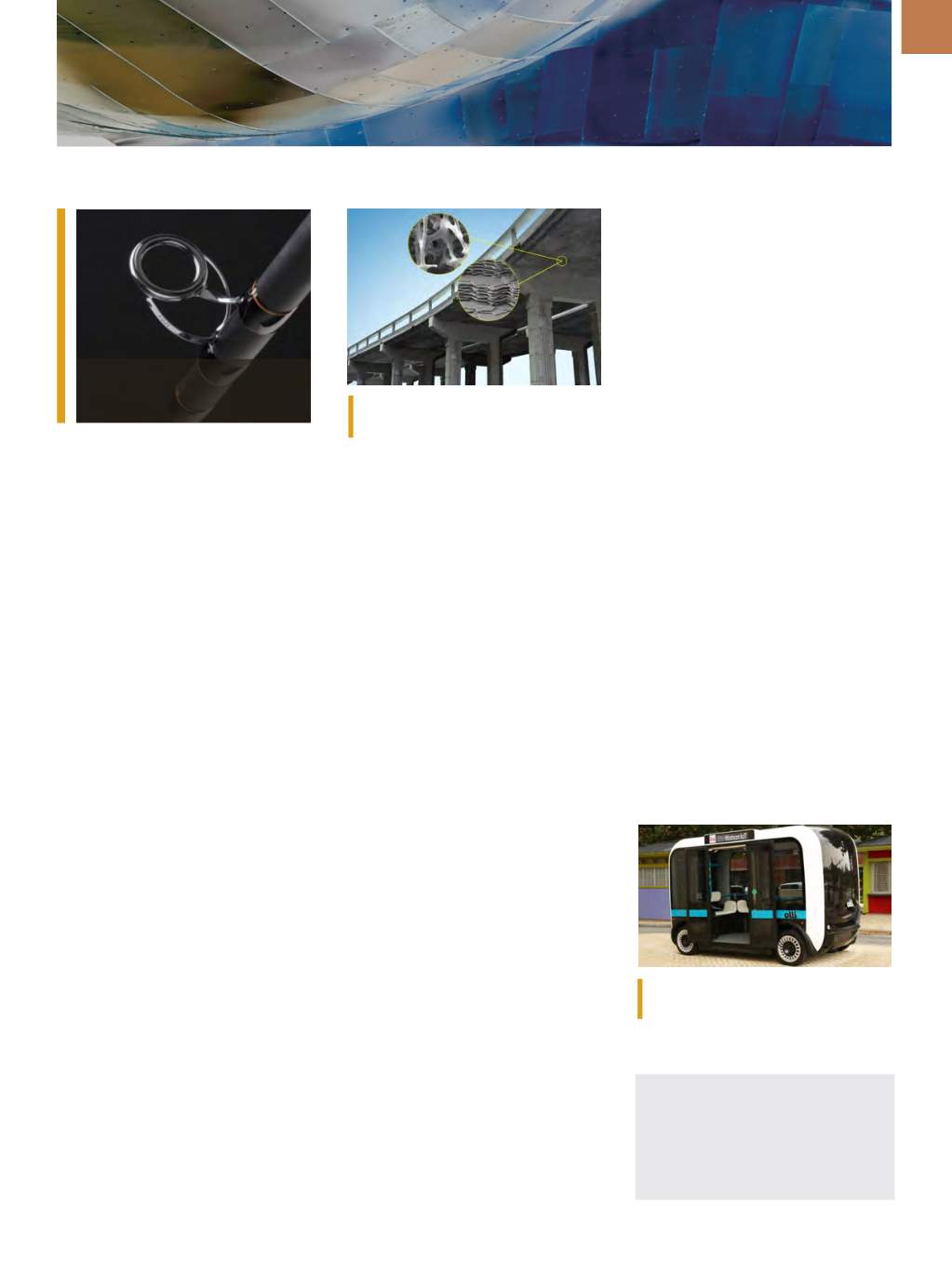

A D V A N C E D
M A T E R I A L S
&
P R O C E S S E S |
N O V E M B E R / D E C E M B E R
2 0 1 6
7
GRAPHENE GOES FISHING
World champion angler Scott
Mackenzie and NASA engineer Gary
Savage say they have made the first
fishing rod using graphene, a dou-
ble-handed salmon rod called the
Mackenzie FX1. The fast recovery is
said to make it easier to cast further
with little effort. Blanks in the rod are
built entirely in the UK using a unique
process: A high-pressure auto clave, a
machine normally used to make parts
for auto racing and aerospace, removes
more air than the traditional rod mak-
ing process, creating a much stronger
blank. This means the FX1 is extremely
strong, durable, and won’t soften or
lose performance over time.
“We have taken the best of every-
thing we have learned in Formula One
to create the best fly rod ever made.
We had an incredibly exciting oppor-
tunity to take the art of salmon fishing
to a whole new level by harnessing
graphene in the right way before any-
one else. The rod is a game changer
for both experts and less experienced
anglers,” says Savage.
mackenziefly-
fishing.com.
CONCRETE GETS A MAKEOVER
Researchers at Massachusetts
Institute of Technology, Cambridge,
are seeking to redesign concrete by fol-
lowing nature’s blueprints. The team
contrasted cement paste—concrete’s
binding ingredient—with the structure
Are you working with or have you
discovered a material or its properties
that exhibit OMG - Outrageous
Materials Goodness?
Send your submissions to
Julie Lucko at
julie.lucko@asminternational.org.
OMG!
OUTRAGEOUS MATERIALS GOODNESS
The Mackenzie FX1 is the first
double-handed salmon rod to
use graphene.
Olli, an autonomous shuttle, at the Na-
tional Harbor in Maryland.
MIT researchers are seeking to redesign
concrete by following nature’s blueprints.
tion solution that passengers can sum-
mon with a mobile app, like Uber. And it
can be printed to specification in
micro
factories
in a matter of hours.
Driving is controlled by a system
developed by Local Motors with sev-
eral software and tech partners. IBM is
not doing the driving but is providing
the user interface so passengers can
have “conversations” with Olli. Using
natural language recognition can help
create a relationship between the pas-
senger and the vehicle, says IBM’s Bret
Greenstein. “A vehicle that understands
human language, where you can walk
in and say, ‘I’d like to get to work,’ that
lets you as a passenger relax and enjoy
your journey,” he explains.
The vehicle relies on more than
30 sensors and streams of data from
IBM’s cloud. With the Watson software,
passengers can ask how the vehicle
works, where they are going, and why
Olli is making certain driving decisions.
And it can answer the dreaded ques-
tion, “Are we there yet?” It also can offer
recommendations for popular restau-
rants or historical sites based on user
preferences.
localmotors.com.
and properties of natural materials such
as bones, shells, and deep-sea sponges.
As researchers observed, these biolog-
ical materials are exceptionally strong
and durable, thanks in part to their pre-
cise assembly of structures at multiple
length scales, from the molecular to the
macro level.
The team, led by professor Oral
Buyukozturk, proposed a new bioin-
spired, bottom-up approach for design-
ing cement paste. “These materials are
assembled in a fascinating fashion, with
simple constituents arranging in com-
plex geometric configurations that are
beautiful to observe. We want to see
what kinds of micromechanisms exist
within them that provide such superior
properties and how we can adopt a
similar building-block-based approach
for concrete. If we can replace cement,
partially or totally, with some other
materials that may be readily and
amply available in nature, we can
meet our objectives for sustainability,”
Buyukozturk says.
For more informa-
tion: Oral Buyukozturk, obuyuk@mit.
edu, web.mit.edu.
OLLI TAKES YOU FOR A RIDE
A new self-driving vehicle—a
3D-printed minibus named Olli, capa-
ble of carrying 12 people—was unveiled
by Arizona-based startup Local Motors
outside Washington, D.C. Olli was
designed as an on-demand transporta-


















